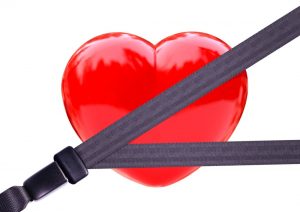Providence Broken Seat Belt Injury Attorneys
If you were in a car crash and suffered injuries from a broken seatbelt, or if the seatbelt malfunctioned, you might be entitled to compensation.
Chances are, you’ve heard this before: Seat belts save lives. That slogan still rings true. The National Highway Transportation Safety Administration estimates that in 2017, nearly 15,000 lives were saved because of seat belt use.
Unfortunately, broken seat belts can’t do the job. Broken or faulty seat belts or seat belt components can cause significant injuries, leaving an accident victim with substantial physical and financial losses. At the Law Offices of Ronald J. Resmini, Accident & Injury Lawyers, Ltd., our car accident lawyers in Providence have seen the devastation caused by broken seat belts.
At the Law Offices of Ronald J. Resmini, Accident & Injury Lawyers, Ltd., we believe you deserve fair compensation for your injuries. We also believe you deserve justice when a defective car part is responsible for causing or exacerbating your injuries. Our skilled team of car accident attorneys will review the circumstances of your case and fight to hold the liable party accountable for their actions.
If you are ready to discuss your legal options, call our office today at (401) 751-8855 to set up a free consultation.
History of the Seat Belt
 Originally the seat belt was invented not for cars but to protect glider pilots in the late 1800s. Eventually, the design was adapted by Edward J. Claghorn in 1885 to keep tourists safe in New York taxi cabs. However, seat belt technology didn’t take off until the late 1950s when a Swedish engineer, Nils Bohlin, designed the three-point safety belt. The innovative design caught the eye of car maker Volvo, who hired Bohlin. While working for the car maker, he perfected his three-point seat belt design to secure the upper and lower body instead of just the lower body like the traditional lap belt. Upon his death in 2002, Volvo estimated that Bohlin’s seat belt design had saved up to one million lives.
Originally the seat belt was invented not for cars but to protect glider pilots in the late 1800s. Eventually, the design was adapted by Edward J. Claghorn in 1885 to keep tourists safe in New York taxi cabs. However, seat belt technology didn’t take off until the late 1950s when a Swedish engineer, Nils Bohlin, designed the three-point safety belt. The innovative design caught the eye of car maker Volvo, who hired Bohlin. While working for the car maker, he perfected his three-point seat belt design to secure the upper and lower body instead of just the lower body like the traditional lap belt. Upon his death in 2002, Volvo estimated that Bohlin’s seat belt design had saved up to one million lives.
Although the technology was innovative and potentially lifesaving, American vehicles were not required to have seat belts until the federal government required lap and shoulder belts in 1968. New York was the first state to pass a law requiring seat belt use in 1984. Today, the National Highway Transportation Safety Administration estimates 90 percent of Americans use seat belts while driving.
How Seat Belts Save Lives
Inertia is the tendency for an object to continue moving until something works against it and stops it from continuing its path. In a car accident, the momentum of a car suddenly stops. However, inertia will make a person’s body continue to move forward until something stops it. Seat belts restrain the torso and lower body, preventing an individual from being tossed around or ejected from a car. Without a seat belt, the ‘something’ that stops the body’s forward movement could be the steering column, the windshield, or the pavement.
Typically, seat belts are made with durable, woven, or webbed material. A retractor box houses the belt and sits on the floor. The box itself contains a spool and spring mechanism. The seat belt fabric rolls onto this mechanism. When someone buckles up, the belt portion unspools from the spring, and the fastener is clasped into a locking buckle component. In belt-activated systems, when an accident occurs, centrifugal force caused by the sudden jerking motion of a collision triggers a lever. The lever catches a gear attached to the interior spool and tightens the belt, holding a person in place.
In belt-activated systems, a weighted pendulum swings into motion when a vehicle suddenly stops. This pendulum causes a metal bar to jam into a gear attached to the spool, tightening the belt and preventing a person from moving forward.
Defective Seat Belt Problems
Seat belts may not seem like complex technical marvels. However, several components must work together to allow a seat belt to function correctly. If any of these components fail, a seat belt cannot effectively stop the forward moment of a person. Parts of the seat belt that may be prone to defects include:
- The webbed fabric of the belt
- The retractor box
- The spool and spring mechanism inside the retractor box
- The tongue or metal tab that fits into the buckle
- The buckle that holds the tongue in place
Defective seat belt parts can cause widespread problems that may lead to significant injuries in the event of a car accident. Potential problems may include:
- Defective latches
- Design flaws
- Tension failure
- Inadequate or poorly constructed straps
- Inadequate passive restraints
Seat Belt Injuries
When a seat belt breaks, a car accident victim can suffer significant injuries. Common injuries associated with broken or defective restraints include:
- Traumatic brain injury
- Paralysis
- Facial injuries
- Broken bones
- Dental damage
- Organ damage
- Internal bleeding
- Lacerations
- Contusions
Compensation for Broken Seat Belt Cases
Depending on the circumstances of the accident, you may have several legal options open to you for recovering compensation for your injuries. First, the at-fault driver or their insurer may be liable for compensating you for your financial losses. You may be able to file a claim or a personal injury lawsuit seeking money for your injuries.
 However, cases involving a defective seat belt or seat belt component are unique. You may also be able to seek compensation from the manufacturer of the seat belt or car.
However, cases involving a defective seat belt or seat belt component are unique. You may also be able to seek compensation from the manufacturer of the seat belt or car.
Recovering compensation for your injuries after an accident can be challenging. You may feel caught in a juggling act, trying to pursue all the parties responsible for causing your injuries. An experienced and knowledgeable attorney can help. An attorney can review your specific case and identify the liable parties. An attorney can also outline your legal options and navigate the process of recovering the compensation you deserve.
Contact a Skilled Broken Seat Belt Attorney for Help
You count on seat belts to protect you and your family. When a broken or defective device makes your car accident injuries worse, you deserve justice. At the Law Offices of Ronald J. Resmini, Accident & Injury Lawyers, Ltd., we want to help you pursue that justice.
Our Rhode Island personal injury law firm is a family-owned and operated business that has been defending the rights of injured victims for over 50 years. Our founder, Ronald J. Resmini, literally wrote the book on Rhode Island personal injury law.
If you’ve been hurt in a car accident, and a broken or defective seat belt caused or worsened your injuries, call our car accident lawyers in Providence at (401) 751-8855 to set up a free consultation.
Related posts:
